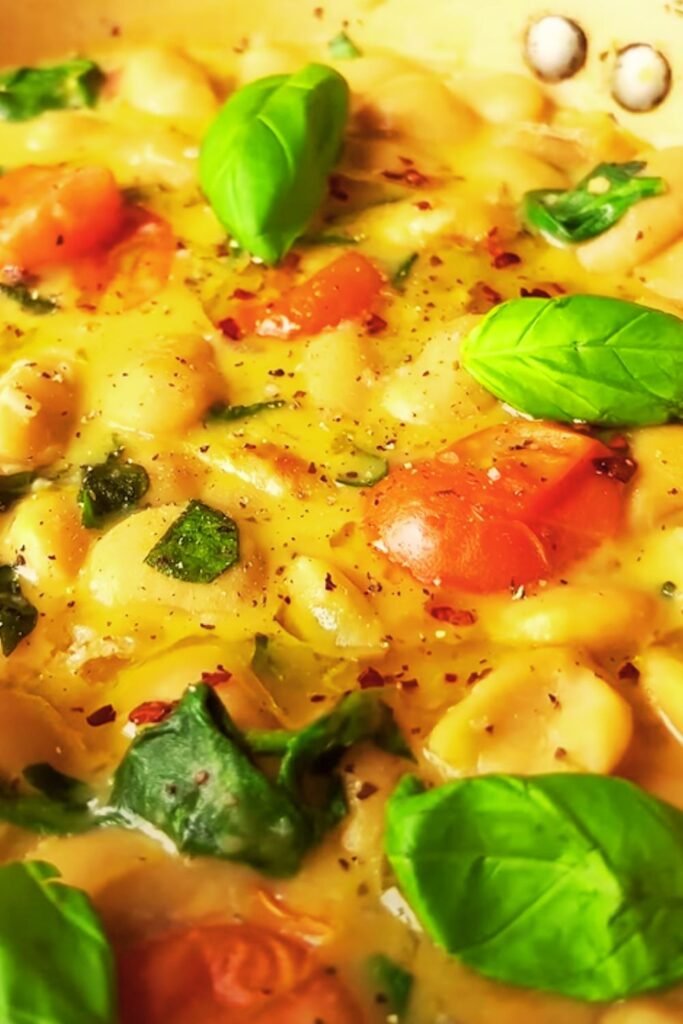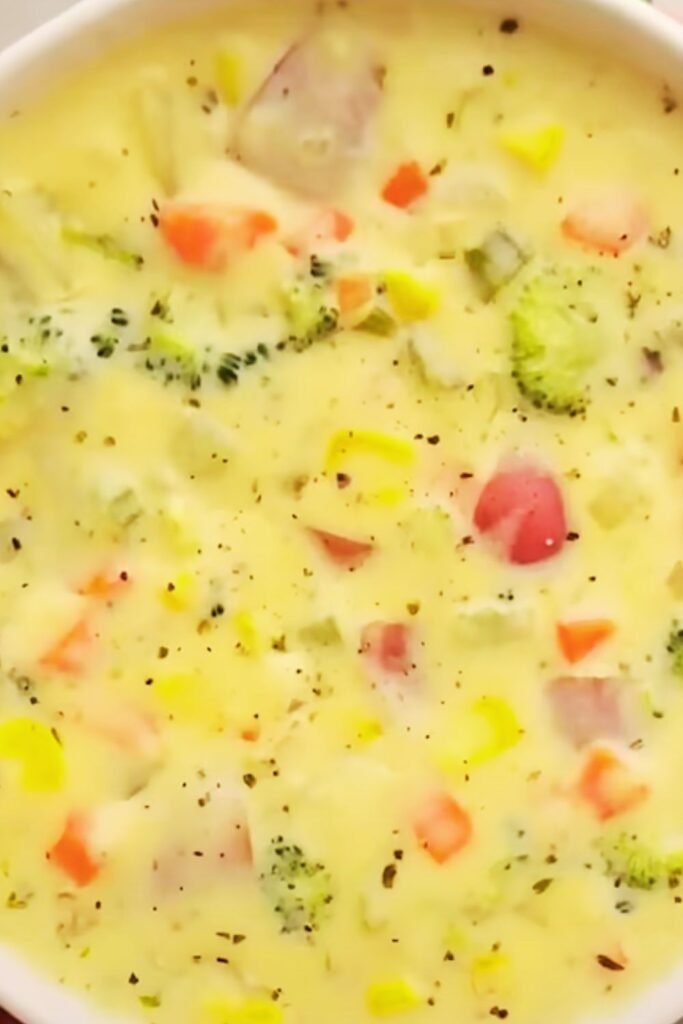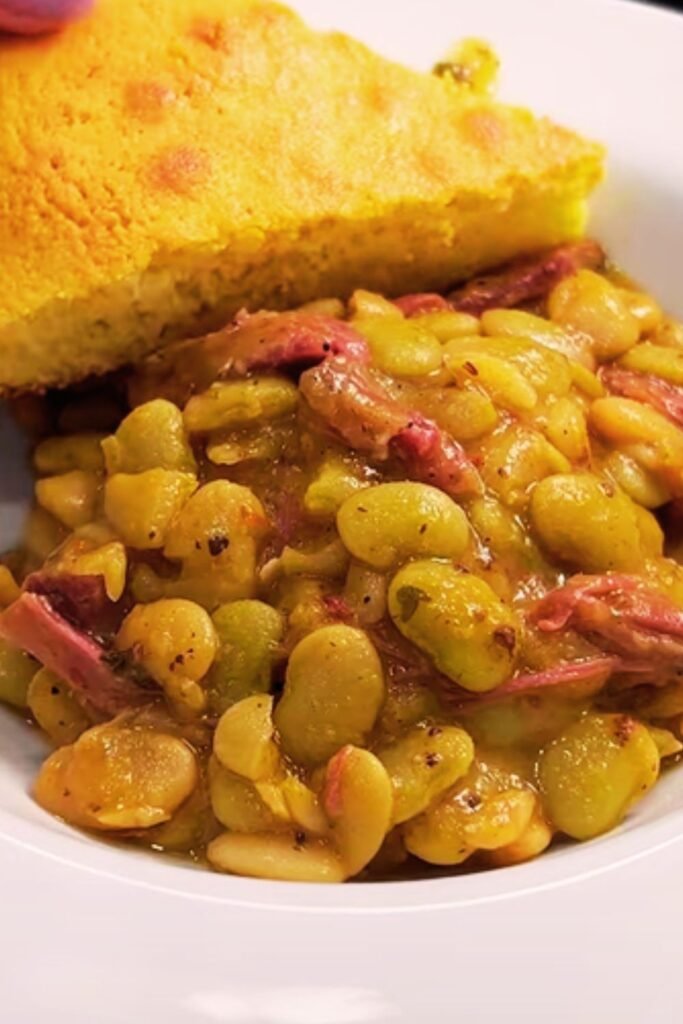When I think about the soul-warming dishes that define Southern comfort food, butter beans immediately come to mind. These creamy, tender legumes have graced my family’s dinner table for generations, carrying with them the rich traditions and flavors that make Southern cuisine so beloved. Today, I’m excited to share my time-tested recipe for Southern butter beans that will transport you straight to a cozy kitchen filled with the aroma of slow-simmered goodness.
Growing up in the South, I learned that butter beans aren’t just a side dish – they’re a celebration of simplicity, patience, and the art of transforming humble ingredients into something extraordinary. My grandmother always said that the secret to perfect butter beans lies not just in the recipe, but in the love and attention you pour into every step of the cooking process.
What Are Butter Beans?
Lima Beans: Large, flat, cream-colored legumes native to South America, also known as butter beans in the Southern United States due to their rich, buttery texture when cooked properly.
Speckled Butter Beans: A Southern heirloom variety featuring purple speckles on cream-colored pods, prized for their exceptionally creamy texture and nutty flavor profile.
Baby Lima Beans: Smaller, more tender version of lima beans that cook faster and have a milder flavor, often preferred by those new to butter bean cuisine.
Fresh vs. Dried: Fresh butter beans offer superior flavor and texture but require shelling, while dried beans provide year-round availability and longer storage life with slightly different preparation methods.
The beauty of butter beans lies in their versatility and nutritional value. These protein-packed legumes provide essential fiber, folate, and minerals that make them both satisfying and healthy. When I prepare butter beans, I’m not just cooking a meal – I’m continuing a culinary tradition that spans generations of Southern cooks.
My Family’s Southern Butter Beans Recipe
This recipe has been perfected through years of cooking for family gatherings, church suppers, and quiet Sunday dinners. The key to exceptional butter beans is understanding that good things take time, and rushing the process will never yield the creamy, flavorful results we’re after.
Ingredients
| Ingredient | Amount | Notes |
|---|---|---|
| Dried lima beans (large) | 1 pound | Soaked overnight |
| Bacon or ham hock | 4-6 slices or 1 hock | For authentic flavor |
| Yellow onion | 1 medium | Diced |
| Garlic cloves | 3-4 cloves | Minced |
| Chicken broth | 4 cups | Low-sodium preferred |
| Water | 2-4 cups | As needed |
| Salt | 1 teaspoon | To taste |
| Black pepper | 1/2 teaspoon | Freshly ground |
| Bay leaves | 2 leaves | Remove before serving |
| Butter | 2 tablespoons | Unsalted |
| Heavy cream | 1/4 cup | Optional, for richness |
Preparation Steps
Soaking the Beans: The night before cooking, I place my dried lima beans in a large bowl and cover them with cold water by at least 2 inches. This overnight soaking ensures even cooking and reduces the overall cooking time significantly.
Preparing the Base: The next morning, I drain and rinse the soaked beans thoroughly. In my heavy-bottomed pot – a Dutch oven works perfectly – I cook the bacon over medium heat until it releases its fat and becomes crispy. The rendered bacon fat becomes the foundation of flavor for our beans.
Building Flavor: I remove the bacon and set it aside, leaving about 2 tablespoons of fat in the pot. The diced onion goes in next, cooking until it becomes translucent and fragrant. This usually takes about 5 minutes. Then I add the minced garlic, stirring constantly for about 30 seconds to prevent burning while releasing its aromatic oils.
Combining Elements: The soaked beans go into the pot along with the chicken broth, bay leaves, and enough water to cover the beans by about 1 inch. I bring this mixture to a boil, then reduce the heat to maintain a gentle simmer. This is where patience becomes your greatest asset.

The Long Simmer: For the next 1.5 to 2 hours, I let the beans simmer gently, stirring occasionally and adding water as needed to maintain the liquid level. The beans are ready when they’re tender enough to mash easily with a fork but still hold their shape. Overcooking turns them mushy, while undercooking leaves them tough and unpalatable.
Final Seasoning: During the last 30 minutes of cooking, I add the salt, black pepper, and crumbled bacon back to the pot. I taste and adjust seasonings as needed, remembering that flavors will concentrate as the liquid reduces.
The Finishing Touch: Just before serving, I stir in the butter and heavy cream if using. This creates the signature creamy texture that makes Southern butter beans so irresistible.
Cooking Techniques and Tips
Temperature Control
| Temperature Stage | Duration | Purpose |
|---|---|---|
| High heat (boiling) | 5 minutes | Initial cooking start |
| Medium heat | 15 minutes | Establish simmer |
| Low heat (gentle simmer) | 90-120 minutes | Tender cooking |
| Very low heat | 30 minutes | Final seasoning integration |
Mastering temperature control is crucial for perfect butter beans. I’ve learned that aggressive boiling breaks down the beans too quickly, creating an unappetizing mushy texture. A gentle simmer allows the beans to cook evenly while maintaining their structure.
Salt Timing: One mistake I made early in my cooking journey was adding salt too early. Salt can toughen the skins of beans, extending cooking time significantly. I now add salt only during the final 30 minutes of cooking, allowing the beans to become tender first.
Liquid Management: Throughout the cooking process, I monitor the liquid level carefully. The beans should always be covered by at least 1/2 inch of liquid. When adding water, I use hot water to avoid shocking the beans and potentially causing them to split.
Testing for Doneness: I test beans by removing a few with a spoon and gently pressing them with a fork. Perfect butter beans should be creamy inside while maintaining their shape. They should never be grainy or hard in the center.
Nutritional Benefits and Information
| Nutrient | Amount per Serving | Daily Value % |
|---|---|---|
| Protein | 12g | 24% |
| Fiber | 9g | 36% |
| Folate | 156mcg | 39% |
| Iron | 2.3mg | 13% |
| Magnesium | 63mg | 15% |
| Potassium | 508mg | 11% |
| Calories | 189 | 9% |
Butter beans are nutritional powerhouses that contribute significantly to a healthy diet. The high fiber content supports digestive health and helps maintain steady blood sugar levels. The substantial protein content makes them an excellent option for vegetarians and anyone looking to reduce meat consumption.
Heart Health: The combination of fiber, potassium, and magnesium in butter beans supports cardiovascular health by helping to regulate blood pressure and cholesterol levels.
Digestive Benefits: The soluble fiber in butter beans feeds beneficial gut bacteria, promoting a healthy digestive system and potentially boosting immune function.
Blood Sugar Control: The low glycemic index of butter beans means they provide steady energy without causing rapid spikes in blood sugar levels.

Serving Suggestions and Pairings
Southern butter beans shine as both a side dish and a main course. I’ve served them countless ways over the years, each preparation bringing out different aspects of their creamy, comforting nature.
Classic Pairings: Butter beans pair beautifully with cornbread, fried okra, and sliced tomatoes for a traditional Southern meal. The combination creates a perfect balance of textures and flavors that epitomizes comfort food.
Main Course Options: I often serve butter beans over rice with a side of collard greens for a complete, satisfying meal. Adding a piece of cornbread turns this into a feast that will keep you satisfied for hours.
Modern Interpretations: For a contemporary twist, I sometimes serve butter beans over quinoa or alongside roasted vegetables. The beans’ creamy texture complements the nuttiness of quinoa beautifully.
Seasonal Variations: During summer, I love serving chilled butter beans as a salad with fresh herbs and a light vinaigrette. In winter, they’re perfect in hearty stews and soups.
Storage and Meal Prep
Storage Guidelines
| Storage Method | Duration | Temperature | Notes |
|---|---|---|---|
| Refrigerator | 3-4 days | 35-40°F | Covered container |
| Freezer | 6 months | 0°F | Portion in freezer bags |
| Room temperature | 2 hours max | Below 70°F | Food safety limit |
Proper storage ensures that my butter beans maintain their quality and safety. I always cool them completely before refrigerating, and I never leave them at room temperature for more than 2 hours.
Freezing Tips: When freezing butter beans, I portion them into meal-sized containers, leaving about 1/2 inch of headspace for expansion. I label each container with the date and contents, using them within 6 months for best quality.
Reheating Methods: I prefer reheating butter beans on the stovetop over low heat, adding a splash of broth or water if needed. Microwave reheating works but requires stirring every 30 seconds to ensure even heating.
Meal Prep Strategy: Butter beans are excellent for meal prep. I often cook a large batch on Sunday, then use them throughout the week in different ways – over rice one day, in a salad the next, or as a side dish for various meals.
Troubleshooting Common Issues
Through years of cooking butter beans, I’ve encountered and solved numerous common problems. Here are the solutions I’ve developed for the most frequent issues:
Tough Skins: If your beans have tough skins after extended cooking, the likely culprit is old beans or hard water. Using filtered water and ensuring your beans are fresh (less than 2 years old) prevents this problem.
Mushy Texture: Overcooking or cooking at too high a temperature causes beans to become mushy. Maintaining a gentle simmer and testing frequently prevents this issue.
Bland Flavor: Under-seasoning is common with butter beans. I build flavor layers throughout the cooking process – starting with bacon fat, adding aromatics, using quality broth, and seasoning appropriately.
Uneven Cooking: Some beans cooking faster than others usually indicates uneven bean sizes or inadequate soaking. Sorting beans by size and ensuring complete overnight soaking solves this problem.
Regional Variations and History

The preparation of butter beans varies throughout the South, with each region adding its own special touches. In Louisiana, cooks often add a touch of cayenne pepper and sometimes okra for thickening. Georgia cooks frequently include a ham hock for deeper flavor, while Carolina preparations might feature fresh herbs like thyme or sage.
Historical Context: Butter beans have been a staple in Southern cuisine since the colonial period. Native Americans introduced lima beans to early settlers, and the beans quickly became integrated into Southern cooking traditions. The addition of pork products reflects both the preservation techniques necessary in pre-refrigeration times and the influence of West African cooking traditions brought by enslaved peoples.
Cultural Significance: In many Southern families, the preparation of butter beans represents more than just cooking – it’s a link to heritage and tradition. The slow, patient cooking process embodies the Southern philosophy of taking time to do things right.
Modern Adaptations: Today’s Southern cooks continue to innovate while respecting tradition. I’ve seen delicious variations that include smoked turkey instead of pork for health-conscious diners, or the addition of fresh corn and bell peppers for extra color and nutrition.
Questions and Answers
Q: Can I use canned lima beans instead of dried beans for this recipe?
Absolutely! While I prefer the texture and control that dried beans provide, canned lima beans work well when you’re short on time. Drain and rinse 3-4 cans of lima beans, then add them during the last 30 minutes of cooking. Reduce the liquid accordingly since canned beans are already tender.
Q: What’s the difference between lima beans and butter beans?
There’s actually no difference – they’re the same bean! The term “butter beans” is commonly used in the Southern United States because of their rich, buttery texture and flavor when cooked properly. The scientific name is Phaseolus lunatus, but Southern cooks have called them butter beans for generations.
Q: How can I make this recipe vegetarian without losing flavor?
I’ve made excellent vegetarian butter beans by replacing the bacon with mushrooms for umami depth. Sauté sliced mushrooms until golden, then proceed with the recipe using vegetable broth instead of chicken broth. Add a tablespoon of soy sauce or Worcestershire sauce for additional savory flavor.
Q: Why do my beans sometimes split open during cooking?
Bean splitting usually occurs when there’s a rapid temperature change or when the beans are cooked too aggressively. Always bring beans to temperature gradually, maintain a gentle simmer rather than a rolling boil, and avoid adding cold liquid to hot beans.
Q: Can I cook butter beans in a slow cooker?
Yes, slow cooker preparation works beautifully for butter beans. After soaking overnight, combine all ingredients in your slow cooker and cook on low for 6-8 hours or high for 3-4 hours. Check liquid levels periodically and adjust as needed.
Q: How do I know if my dried beans are too old to use?
Beans older than 2-3 years may never become tender, regardless of cooking time. If your beans remain hard after 3+ hours of cooking, they’re likely too old. Fresh beans should have a slight sheen and feel heavy for their size.
Q: What’s the best way to add extra vegetables to this recipe?
I love adding diced bell peppers, celery, and carrots during the last hour of cooking. These vegetables complement the butter beans beautifully without overpowering their delicate flavor. Add corn kernels during the final 15 minutes for sweetness and color.
Q: Can I make butter beans ahead for a large gathering?
Butter beans are perfect make-ahead dishes! I often prepare them a day in advance, as the flavors actually improve overnight. Reheat gently on the stovetop, adding liquid if needed. They also hold well in a slow cooker on warm setting for serving at gatherings.
Q: Why is my cooking liquid cloudy?
Cloudy cooking liquid is normal and actually indicates that some of the beans’ starches have released into the liquid, contributing to the creamy texture we want. Don’t worry about this – it’s a sign that your butter beans are cooking properly.
Q: How can I reduce the sodium in this recipe?
Use low-sodium or no-salt-added broth, reduce or eliminate the bacon, and control salt addition at the end of cooking. You can enhance flavor with herbs, garlic, onions, and a splash of vinegar instead of relying on salt for taste.
This Southern butter beans recipe represents more than just a cooking method – it’s a connection to tradition, family, and the simple pleasure of creating something delicious from basic ingredients. Every time I prepare these beans, I’m reminded of the countless generations of Southern cooks who have stirred similar pots, creating comfort and nourishment for their families. I hope this recipe brings the same warmth and satisfaction to your table that it has brought to mine for so many years.